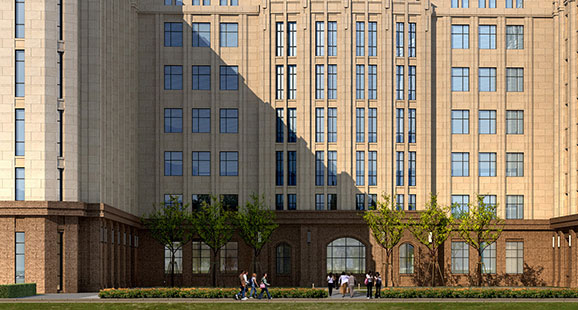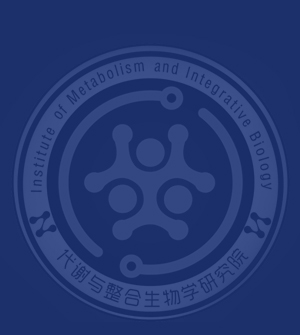


Tel: 0086-21-31242906
Email: renruobing@fudan.edu.cn
Office Address: Room D7017, Interdisciplinary Building No.2, Fudan University
Personal Profile
Dr. Ren, Ruobing received his bachelor's degree in biotechnology from the School of Life Sciences of University of Science and Technology of China in 2009. Then he joined in Professor Shi, Yigong’s group in Tsinghua University focusing on the molecular mechanism of cholesterol metabolism regulation and received PhD in Biology in 2015. During 2015-2017, he worked as an associate scientist at Amgen Asia R&D Center. After that, he joined in the Chinese University of Hong Kong, Shenzhen School of Life and Health Sciences and Kobilka Institute of Innovative Drug Discovery as tenure-track assistant professor until end of 2021. Now he is the young investigator of IMIB at Fudan University.
Research Interests
Dr. Ren has focused on the structures and molecular mechanisms of membrane proteins with biological significance using a combination of state-of-the-art structural (X-ray crystallography, cryo-EM) and biochemical/biophysical techniques for over 10 years. The overriding focuses of his lab are the synthesis, transport, and signaling transduction of steroid molecules, fatty acids, and sphingolipids. As first and/or corresponding authors, he has published several research articles in the world's leading journals such as Science, Nature Communications, Journal of Biological Chemistry and so on.
Honors and Awards
2018 The high-level talent program of Shenzhen (Category A)
2018 The talent program of Longgang district, Shenzhen (Category A)
2018 The outstanding expert of Longgang district, Shenzhen
2015 Dongsheng innovative scholarship (Class I) of School of Lifesciences at Tsinghua University
Selected Publications
Ti R*, Pang B*, Yu L, Gan B, Ma W, Warshel A#, Ren R#, Zhu L#. Fine-tuning activation specificity of G-protein-coupled receptors via automated path searching. Proc. Natl. Acad. Sci. U.S.A. 121 (8), e2317893121.
Jiao H*, Pang B*, Liu A, Chen Q, Pan Q, Wang X, Xu Y, Chiang Y#, Ren R#, Hu H#. Structural insights into the activation and inhibition of CXC chemokine receptor 3. (2024) Nature Structural & Molecular Biology. e-print, 1-11.
Pang B*, Yu L*, Li T*, Jiao H, Wu X, Wang J, He R, Zhang Y, Wang J, Hu H, Dai W#, Chen L#, Ren R#. Molecular basis of Spns2-facilitated sphingosine-1-phosphate transport. (2023) Cell Research. 34:173-176
Jiao H*, Pang B*, Chiang Y, Chen Q, Pan Q, Ren R#, Hu H#. Structure basis for the modulation of CXC chemokine receptor 3 by antagonist AMG487. (2023) Cell Discovery. 9 (1), 119
Wu X, Pang B, You J, Yu L, Ren R#, Wang H#, Chen L#. An LC-MS-based workflow measures the export activity of S1P transporters. (2023) Biochemical and Biophysical Research Communications. 668, 118-124.
Yu T, Huang T, Yu L, Nantasenamat C, Anuwongcharoen N, Piacham T, Ren R#, Chiang Y#. Exploring the Chemical Space of CYP17A1 Inhibitors Using Chem-informatics and Machine Learning. (2023) Molecules. 28(4),1679.
Han Y, Zhuang Q, Ren R#. Approaches for evolutionary, biochemical, and structural analysis of bacterial steroid 5a-reductases. (2023) Methods in Enzymology. e-print
Gan B*, Yu L*, Yang H*, Jiao H, Pang B, Chen Y, Wang C, Lv R, Hu H, Cao Z#, Ren R#. The structural basis of itch receptor MRGPRX1 activation. (2023) PLOSBiology. 21(6), e3001975.
Wang C*, Yu L*, Zhang J*, Zhou Y*, Sun B, Xiao Q, Zhang M, Liu H, Li J, Luo Y, Xu J, Lian Z, Lin J, Wang X, Zhang P, Guo L#, Ren R#, Deng D#. Structural basis of the substrate recognition and inhibition mechanism of Plasmodium falciparum nucleoside transporter PfENT1. (2023) Nature Communications. 14 (1), 1727.
Zheng L*, Meng J*, Lin M, Lv R, Cheng H, Zou L, Sun J, Li L, Ren R#, Wang S#. Structure prediction of the entire proteome of monkeypox variants. (2022) Acta Materia Medica. (Cover article), 1(2), 260-264.
Yu L*, He L*, Gan B*, Ti R*, Xiao Q, Hu H, Zhu L#, Wang S#, Ren R#. Structural insights into sphingosine-1-phosphate receptor activation. (2022) Proc. Natl. Acad. Sci. U.S.A. 119 (16), e2117716119.
Han YF*, Zhuang Q*, Sun B*, Lv WP*, Wang S*, Xiao QJ, Pang B, Zhou YL, Wang FX, Chi PL, Wang QS, Li Z, Zhu LZ, Li FP, Deng D#, Chiang Y-C#, Li ZF#, Ren RB#. Crystal structure of steroid reductase SRD5A reveals conserved steroid reduction mechanism. (2021) Nature Communications. 12 (1), 449.
Ren RB*,#, Pang B, Han YF, Li YH. A Glimpse of Structural Biology on Sphingosine-1-Phosphate Metabolism. (2021) Contact. 4, 2515256421995601.
Chen G*, Wang XK*, Ge YJ*, Ma L*, Chen Q, Liu HH, Du Y, Ye R, Hu HL#, Ren RB#. Cryo-EM structure of activated bile acids receptor TGR5 in complex with stimulatory G protein. (2020) Signal transduction and targeted therapy. 5 (1), 142.
Ren RB*, Zhou XH*, He Y, Ke M, Wu JP, Liu XH, Yan CY, Wu YX, Gong X, Lei XG, Yan SF, Radhakrishnan A, Yan N#. Crystal structure of a mycobacterial Insig homolog provides insight into how these sensors monitor sterol levels. (2015) Science. 349 (6244), 187-191.
Xie T*, Ren RB*, Zhang YY*, Pang Y, Yan C, Gong X, He Y, Li W, Miao D, Hao Q, Deng H, Wang Z, Wu JW#, Yan N#. Molecular mechanism for inhibition of a critical component in the Arabidopsis thaliana abscisic acid signal transduction pathways, SnRK2.6, by protein phosphatase ABI1. (2012) Journal of Biological Chemistry. 287 (1), 794-802.



 Fudan Email
Fudan Email Fudan Ehall
Fudan Ehall